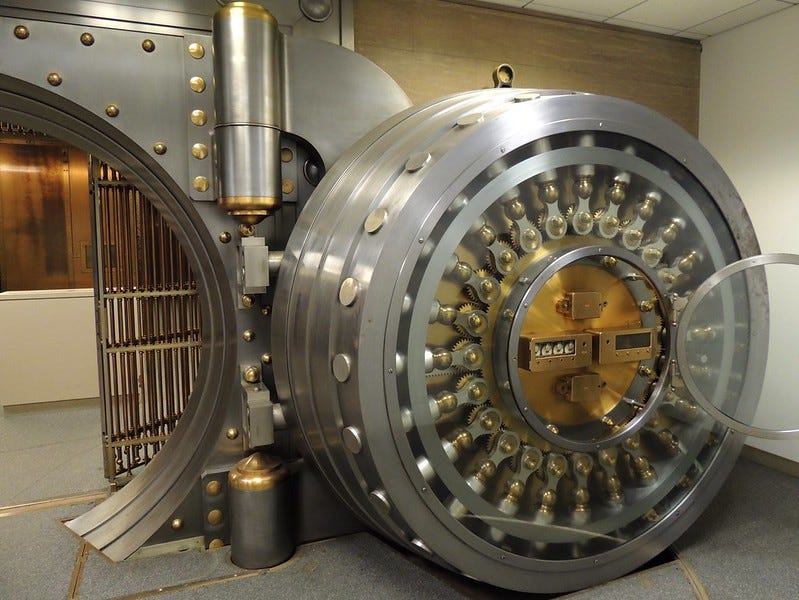TPG solar deal brightens outlook for beat up renewable sector
Welcome to Callaway Climate Insights, your guide to daily global climate finance analysis.
Today’s edition of Callaway Climate Insights is free for all our readers. We really want to bring you the best and latest in climate finance from around the world. Please subscribe now.

With all the chaos and anti-climate attacks in Washington right now, who would want to buy a solar company?
TPG, the Texas buyout giant, said this week its climate investment arm will purchase commercial solar developer Altus Power AMPS 0.00%↑ of Connecticut for $2.2 billion, or $5 a share, up from its closing price of $3.83 on Wednesday.
Although the two had been talking since late last year, the news was enough to lift troubled solar stocks, which have faltered in recent weeks amid the new Trump administration’s attacks on climate investment. First Solar FSLR 0.00%↑ shares were up about 2.5% after the announcement and shares of the Invesco Solar ETF TAN 0.00%↑ were up almost 2%.
Altus is one of the larger commercial solar providers in the U.S. with operations in 25 states. Like many renewable energy companies, its shares have steadily declined in recent years as higher interest rates and AI hype overwhelmed the climate storyline. Its shares are down about two-thirds from a high above $12 in the summer of 2022.
But the deal underscores that America’s thirst for more power for infrastructure, particularly new data centers for AI systems, is likely to transcend petty politics and lift many boats in the renewable sector, — with the possible exception of offshore wind. With solar sector shares depressed, it also is a potential harbinger of more deals to come.
Don’t forget to contact me directly if you have suggestions or ideas at dcallaway@callawayclimateinsights.com.
Follow us . . . .
Twitter | LinkedIn | Facebook | Instagram
The real reason climate stocks lag the market
. . . . It’s not a secret that green, renewable energy stocks have lagged the market for the past few years, but few investors have agreed on why. Now comes a new theory, summed up by Mark Hulbert, that explains the phenomena is caused by the fact that investors use climate stocks as a hedge against dire expectations for environmental damage. That hedge only works, however, when at the forefront of investor minds, which explains why AI stocks have stolen the limelight and the performance rankings from green energy stocks in the past few years. Another way of saying Wall Street’s found a shiny new toy, perhaps.
Thursday’s subscriber insights

European oil firms’ retreat from renewables shifts into high gear
. . . . Two more European oil giants backtracked on renewable energy strategies this week, citing headwinds against the sector, including President Donald Trump’s distaste for offshore wind. Both Total in France and Equinor, Norway’s state-owned oil company, said they would scale back renewable investment in favor of more oil production.
Of the two, the more interesting is Equinor, as its decision to halve its renewable investment for the next three years could reflect a shift in the thinking of the Norwegian government. Norway has long been an enigma in climate circles. It boasts the largest percentage (high 90s) of electric vehicle users in the world, and yet the economy is reliant mostly on its oil reserves.
Equinor, which changed its name from Statoil in 2018, has been at the forefront of renewable investment in Europe, and just last year took a 10% stake in Danish wind giant Ørsted, which just lost its CEO last week and confirmed this week it is cutting 2030 investment plans by up to 25%. Now Equinor appears to be following rivals such as BP and Shell back into the safe haven, so to speak, of oil and gas production to generate profits, vs. renewable investments.
Norway’s sovereign wealth fund, with more than $1.8 trillion under management, has also lagged in the performance of its climate strategy in the last year, raising questions about its commitment in the face of dwindling returns. How the country’s investment managers and oil industry adjust to a new pro-oil era under Trump vs. the desires of their climate-friendly constituents will be one of the more interesting international investment stories of 2025.
Editor’s picks: Global housing costs; plus, managing food waste
Watch the video: Climate change is contributing to rising housing prices, changing what areas are desirable and how we protect our homes, DW Planet A reports. Disasters such as fires and flooding are becoming more frequent because human activity is warming the atmosphere and the oceans. In the midst of a housing affordability crisis, here’s how climate helps fuel gentrification, and what we can do about it.
Starbucks joins national food waste pact
Starbucks SBUX 0.00%↑ has become the second so-called quick-serve restaurant to join the U.S. Food Waste Pact, a national voluntary agreement that is focused on reducing waste in the U.S. food system through precompetitive collaboration and data sharing. An estimated 38% of food produced in the United States goes uneaten or unsold and the resulting waste generates 5.2% of U.S. greenhouse gas emission. Starbucks began its hunger relief efforts in 2016. Its FoodShare program operates in 100% of our company-operated stores, in partnership with Feeding America and other hunger-relief organizations. In addition to Starbucks, current U.S. Food Waste Pact signatories across the food system include ALDI US, Amazon AMZN 0.00%↑ Fresh, Aramark, Bob’s Red Mill, Chick-fil-A, Compass Group USA, Del Monte Fresh Produce Company, Raley’s, Walmart WMT 0.00%↑ and Whole Foods Market and more.
Latest findings: New research, studies and projects
Climate alignment for banks
As the climate crisis continues, banking regulation becomes a key arena for climate advocacy, writes the author of a paper titled Climate Alignment For Banks: The Stories That Numbers Tell. “Every major economic investment, whether in fossil fuels or clean technology, requires finance, and much of that finance comes from large banks. This brings-up the notion of ‘climate alignment.’ Climate alignment measures the extent to which bank lending is consistent with the kind of investments that need to be made (or avoided) for the world to meet Paris Agreement goals.” The focus of this article, according to the author, is that rapid decarbonization requires bank regulators to shift their primary focus from risk to alignment. “To this effect, the article contrasts alignment with the dominant risk approach, explains how alignment is measured in practice, and makes specific recommendations for bank alignment disclosures.” Author: Nadav Orian Peer, University of Colorado Law School
More of the latest research:
The Low-Carbon Transition, Climate Commitments and Firm Credit Risk
Pricing of Green Bonds - Drivers and Dynamics of the Greenium
Words to live by . . . .
“Shhh… I have a secret for you all. Capitalism and the fossil fuel industry are causing the climate crisis. Wait, is that not a secret? Then why are governments, private institutions and multinational companies still investing billions of dollars in the very industry that’s causing the suffering of billions of people around the world?” — Mitzi Jonelle Tan, Filipino climate justice activist.




